Latin America Stevedoring & Marine Cargo Handling Market Size
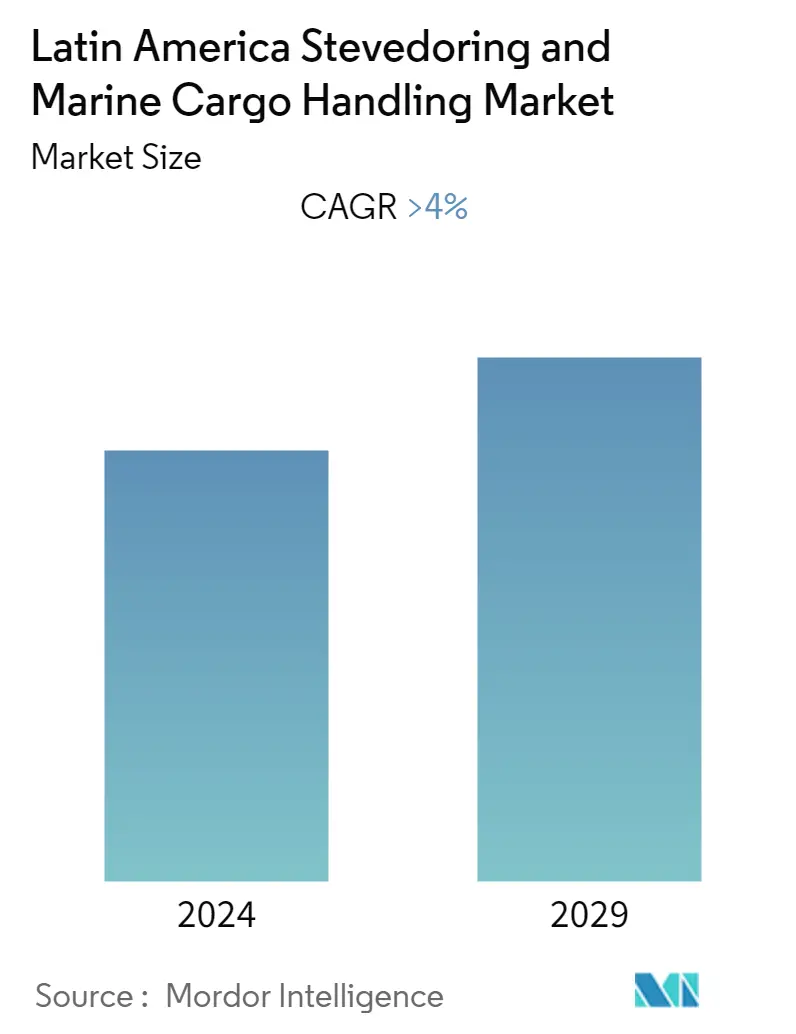
| Study Period | 2020 - 2029 |
| Base Year For Estimation | 2023 |
| Forecast Data Period | 2024 - 2029 |
| Historical Data Period | 2020 - 2022 |
| CAGR | 4.00 % |
| Market Concentration | Medium |
Major Players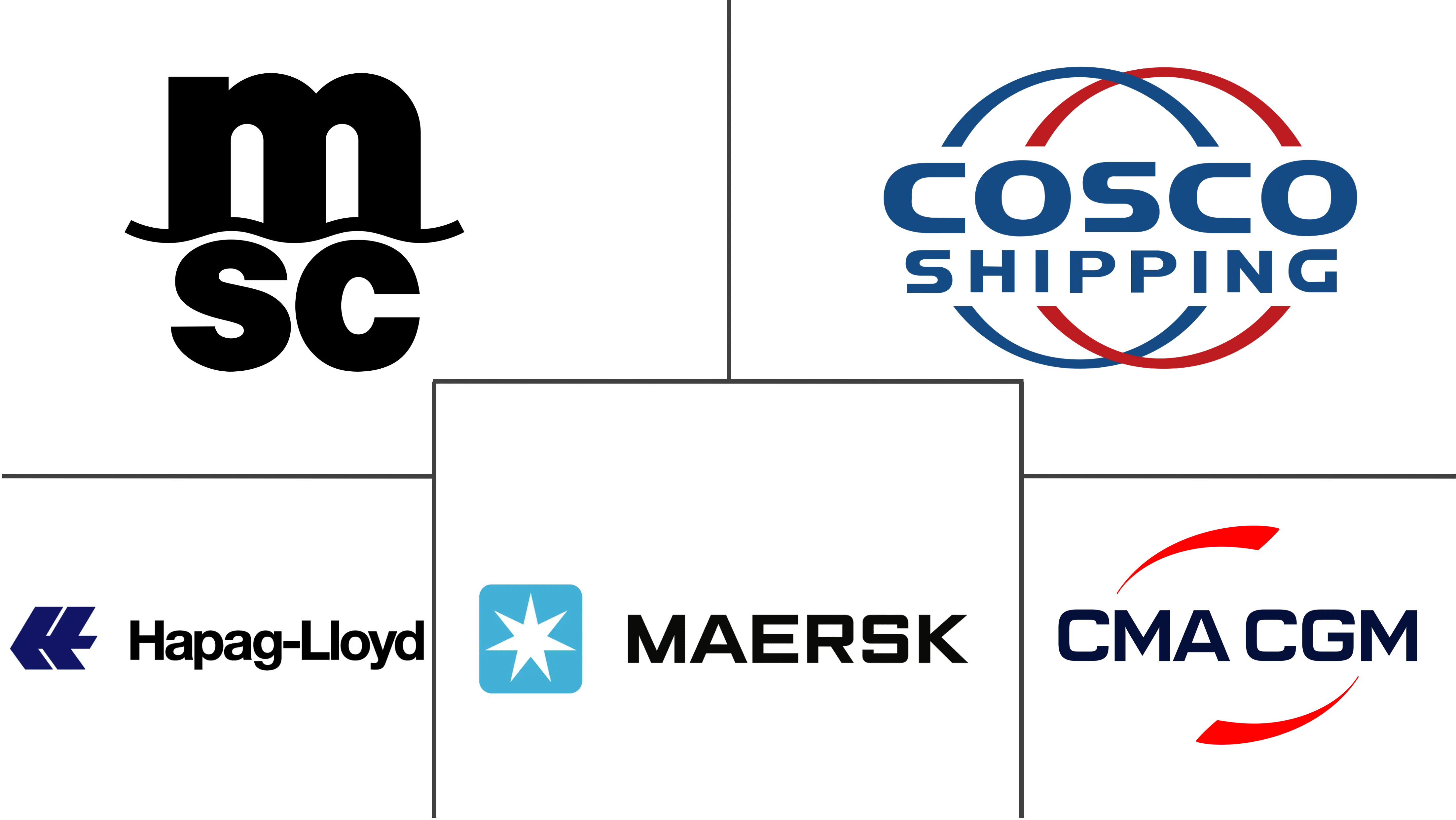
*Disclaimer: Major Players sorted in no particular order |
Latin America Stevedoring & Marine Cargo Handling Market Analysis
The Stevedoring and Marine Cargo Handling market in Latin America is expected to grow at a CAGR of more than 4% during the forecast period.
- Over the past two years, the Latin American region has underperformed in terms of global economic growth. Due to the Covid-19 epidemic, the global gross domestic product (GDP) climbed by 2.5% in 2019 and declined by 3.5% in 2020.
- The maritime market and port sector in Latin America is experiencing profound changes in its organization (concentration of supply, strategic alliances, vertical integration between terminal operators and shipping companies) and technology (greater supply capacity of ships and ports, automation and electrification of port terminals, greater efficiency in ship propulsion, etc.)
- The number of container ship arrivals in Panama increased by 22% as more container ships transited through the Panama Canal to avoid congestion in the US West Coast ports, increasing port calls including bunkering and crew changes. Among the top 30 economies by vessels arrivals for loading of dry bulk vessels, 12 recorded more than 50% increases in waiting time for loading, with Colombia recording one of the three highest increases in addition to Oman and Norway. In Colombia, COVID-19-related restrictions disrupted not only port operations but also coal mining and rail transportation, leading to an increase in ships' waiting time for loading.
- The Latin America stevedoring and marine cargo handling market is anticipated to expand significantly due to increased marine traffic. Moreover, emerging nations in Latin America are investing in new marine port construction. However, cargo operators are capitalizing on advanced technology equipment to reduce loading and discharging time and improve their operating efficiency. This is likely to boost the market during the forecast period.
Latin America Stevedoring & Marine Cargo Handling Market Trends
This section covers the major market trends shaping the Latin America Stevedoring & Marine Cargo Handling Market according to our research experts:
Digital transformation and technology adoption is likely to drive the market growth
According to a survey conducted on the Network of Digital and Collaborative Ports, focused on digital transformation and technology adoption. 83% of those surveyed consider Panama, Peru, Mexico, Brazil, and Colombia to be the leading countries in port digital transformation at the regional level, with the ports of Callao, Santos, Manzanillo, Cartagena, and those located in the cities of Colon and Balboa standing out.
The survey provided insight into the perception of ports in Latin America and the Caribbean on the digital transformation of the sector. It showed that the use of innovative technologies such as autonomous vehicles, digital twins, blockchain, virtual reality, artificial intelligence (AI), machine learning, and robotics are used incipiently in the region. Furthermore, the digitalization of seaport business processes may enhance sea-land supply chain performance. Despite numerous benefits, digital transformation in the maritime transport sector lags behind other transport sectors.
Many ports have started implementing digital transformation by standardizing documentation through a Maritime Single Window. Next, introduce a Port Community System and Port Management System, which help optimize, manage, and automate logistics such as vessel traffic, cargo, inspections, permits, and even waste. Thus, the creation of an efficient digital ecosystem would go a long way in streamlining operations and facilitating the exchange of data between shipping lines, port services, cargo handling operations, clearance agencies, and with other transport networks.
Artificial intelligence has many potential applications in the maritime industry, e.g. optimizing business processes, voyage planning, cargo handling, and vessel maintenance. AI-based predictive positioning systems will enable shipmasters and bridge teams to monitor and predict future positions, movements, and maneuvers of their vessel hours in advance, improving situational awareness, decision-making, and ultimately safety. ML/AI technologies are currently able to give an economic effect from the use, optimization, and increase the efficiency of a shipping company. For example, Fuel optimization systems, time optimization in cargo handling, and others.
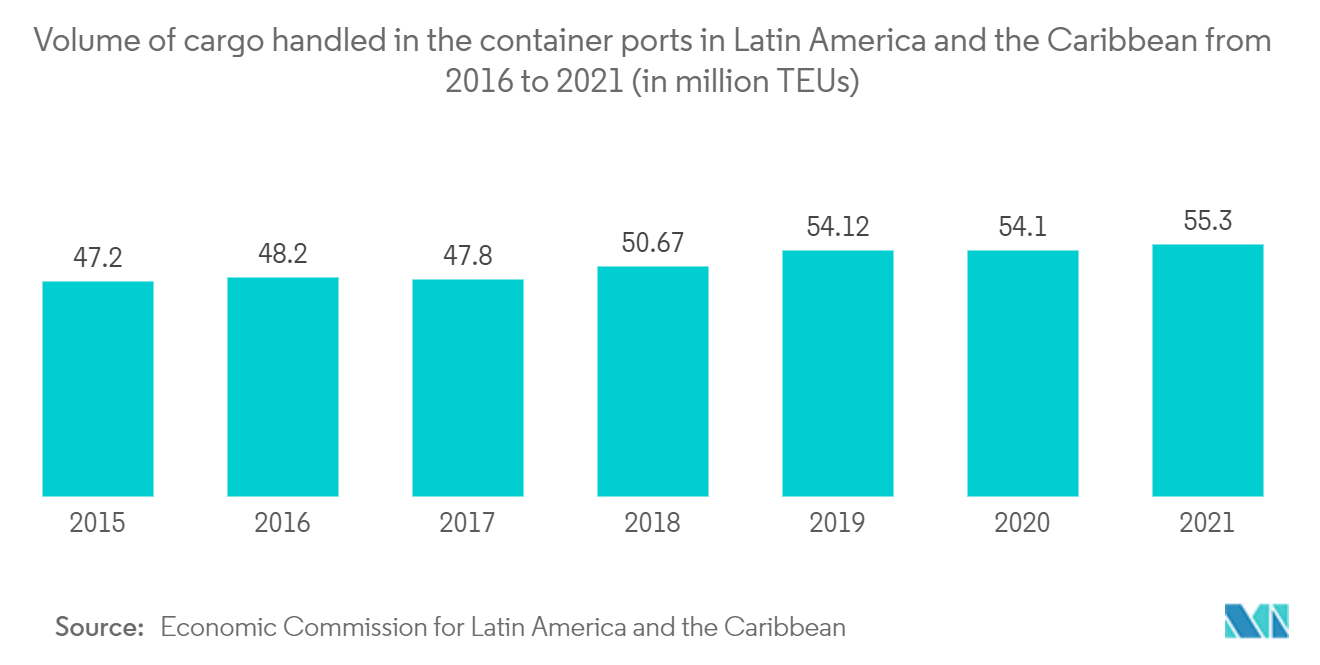
Increasing Maritime Trade
In 2021, maritime trade in Latin America and the Caribbean (LAC), including both goods loaded and discharged, amounted to 2 billion tons, a 3% increase over 2020. The continent accounted for 12.6% of total goods loaded and 5.8% of total goods discharged.
The COVID-19 pandemic seriously disrupted containerized seaborne trade, exports, and imports in LAC. During the first half of 2020, LAC's containerized trade fell by 12.2%. In the first half of 2022, most LAC subregions increased their containerized cargo exports. However, exports from the Gulf Coast of Mexico remained flat while there were falls in exports from the East Coast of South America (ECSA) and the Pacific coast of Panama.
Between January and June 2022, exports from ECSA, the Pacific coast of Central America, and the Gulf coast of Mexico were lower than in the same period in 2021. In Panama, for the Pacific coast, exports did not recover to 2019 levels, and for the Caribbean coast, there was no recovery in imports.
In the first half of 2022, throughput for regional container ports was mostly similar to 2020. The main exception was the Mexican Pacific coast, which showed greater dynamism. During the pandemic there were more transhipments through the region's large hub ports, so the recent lower dynamism could signal a return to pre-pandemic levels.
As of 1 January 2022, Panama featured among the top three flags of registration in terms of dead-weight tonnage and commercial value. The Bahamas flag had the largest decrease (1.5 percentage points) in dead-weight tonnage. Among the top six registries, ships registered in Panama, followed by China, had the highest average age of the total fleet. Differences in age reflect differences in registry policies, pricing structure, and specialization in different ship types. In January 2022, among these registries, Panama, at 18.9 years, had the highest average age across most ship types except bulk carriers, which represented 58% of its registered fleet. All these activities have been increased at the port. So these factors boost the demand for the stevedoring and marine cargo handling market in Europe during the forecast period.
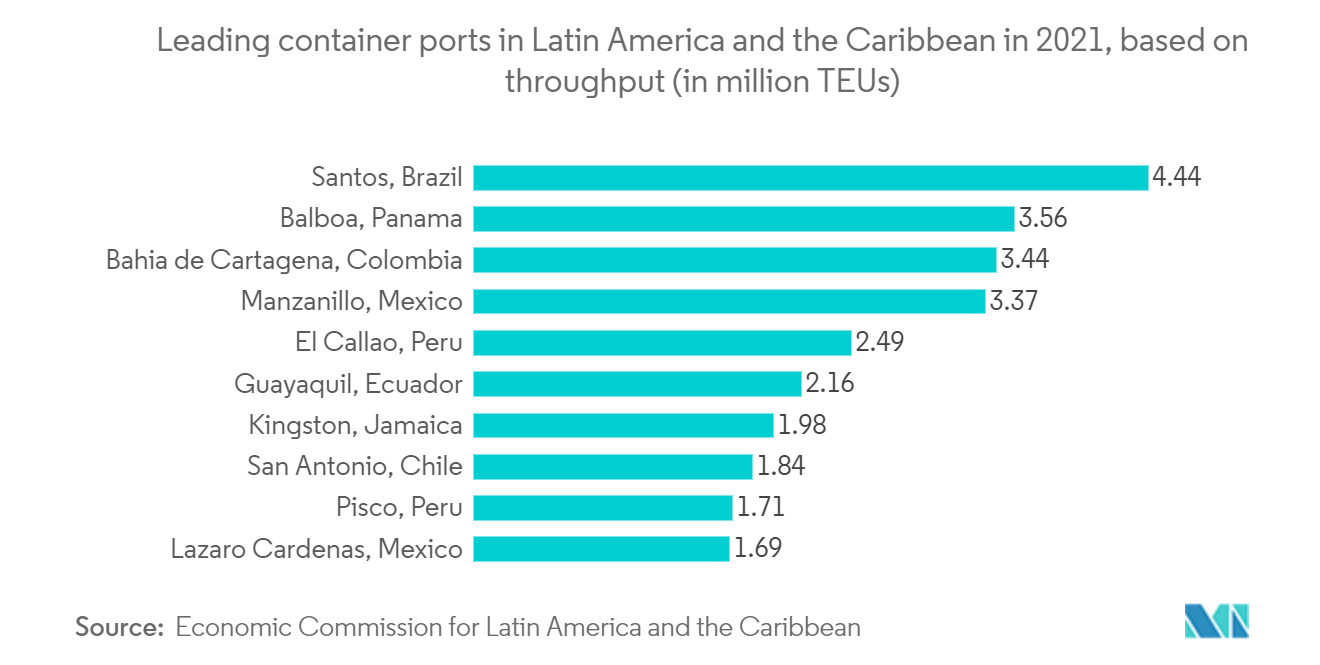
Latin America Stevedoring & Marine Cargo Handling Industry Overview
A.P. Moller - Maersk, Mediterranean Shipping Co, COSCO Group, CMA CGM Group, Hapag-Lloyd, UWL, Inc, Latin American Cargo, Navios South American Logistics Inc, ONE (Ocean Network Express), Tuscor Lloyds Ltd are prominent market participants for Latin America Stevedoring and Marine Cargo Handling. The competition amongst service providers is further heightened by the strict regulatory requirements that must be met. Businesses participate in M&A transactions to develop their product lines and expand regionally.
The main factors driving this market are increased seaborne trade and rising trends like e-commerce. However, the market's expansion may be hampered by the high capital costs of cargo handling equipment and a lack of synchronization among various pieces of equipment.
Latin America Stevedoring & Marine Cargo Handling Market Leaders
-
A.P. Moller - Maersk
-
Mediterranean Shipping Co
-
COSCO Group
-
CMA CGM Group
-
Hapag-Lloyd
*Disclaimer: Major Players sorted in no particular order
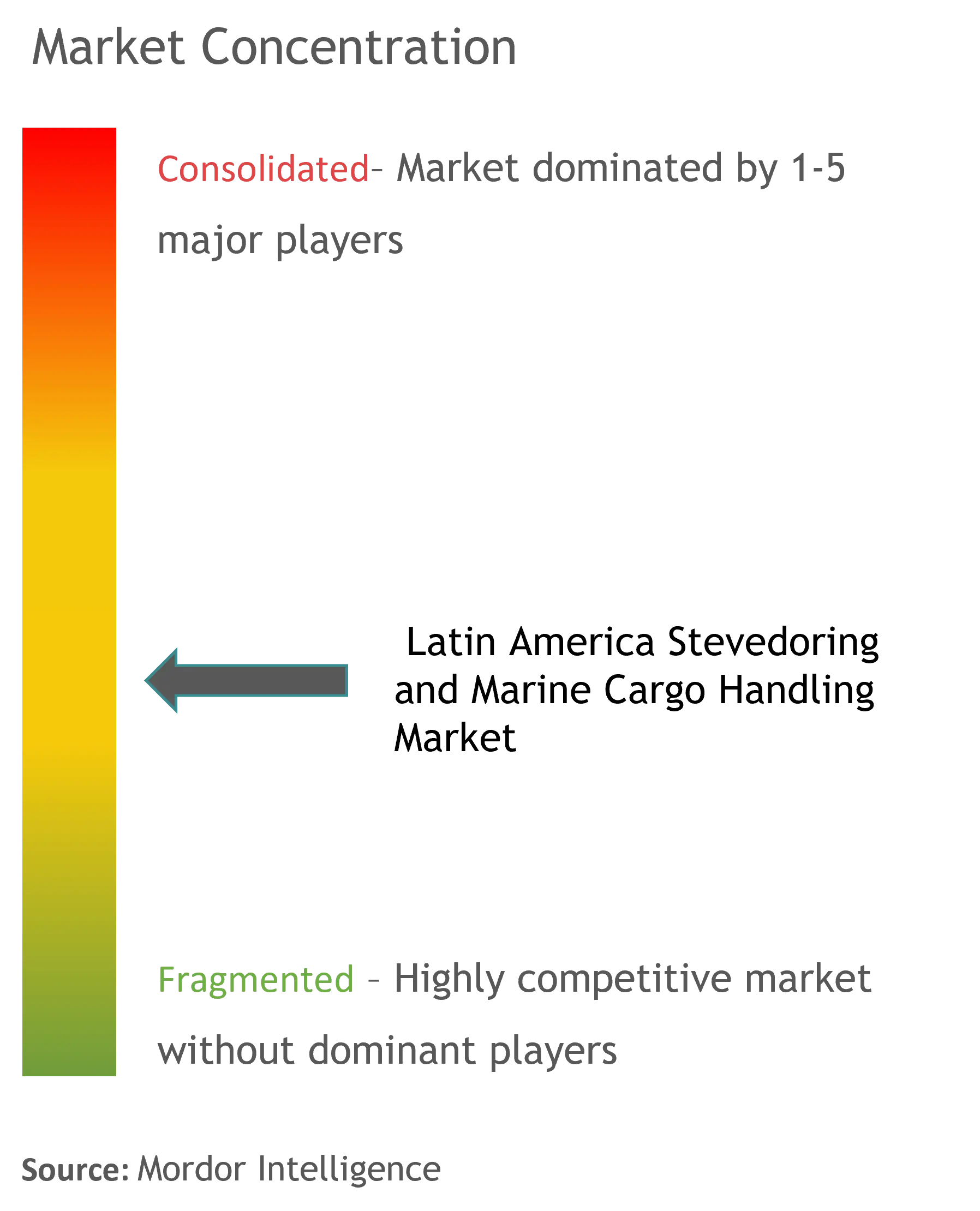
Latin America Stevedoring & Marine Cargo Handling Market News
- May 2022: Jumbo Maritime has awarded Fugro a positioning and metocean services contract to help guide the safe transport and installation of a new floating production system (FPS) for Vito, a deepwater development in the US Gulf of Mexico.
- May 2022: Brazil signed an agreement with ten countries to establish a faster clearance procedure for imported and exported goods. The deal provides the mutual recognition of companies with a good history of complying with customs rules, thus gaining the privilege of differentiated treatment of their goods
Latin America Stevedoring & Marine Cargo Handling Market Report - Table of Contents
1. INTRODUCTION
- 1.1 Market Definition and Scope
- 1.2 Study Assumptions
2. RESEARCH METHODOLOGY
3. EXECUTIVE SUMMARY
4. MARKET INSIGHTS AND DYNAMICS
- 4.1 Current Market Scenario
- 4.2 Technological Trends and Automation in Ports
- 4.3 Government Regulations and Key Initiatives
- 4.4 Insights into Transshipment Trade
- 4.5 Insights into Containerized and Non-containerized Shipments
- 4.6 Insights on Stevedoring Services and Charges in the Ports
- 4.7 Insights on Bunkering Services
- 4.8 Insights on Investments in the Maritime Industry
- 4.9 Insights on the Number of Establishments and the Maritime Sector's Contribution to the Total Services Sector
- 4.10 Impact of COVID-19 on the Market
-
4.11 Market Dynamics
- 4.11.1 Market Drivers
- 4.11.2 Market Drivers
- 4.11.3 Market Opportunities
-
4.12 Industry Attractiveness - Porter's Five Forces Analysis
- 4.12.1 Threat of New Entrants
- 4.12.2 Bargaining Power of Buyers/Consumers
- 4.12.3 Bargaining Power of Suppliers
- 4.12.4 Threat of Substitute Products
- 4.12.5 Intensity of Competitive Rivalry
5. MARKET SEGMENTATION
-
5.1 Type
- 5.1.1 Stevedoring
- 5.1.2 Cargo and handling transportation
- 5.1.3 Others
-
5.2 Cargo Type
- 5.2.1 Bulk Cargo
- 5.2.2 Containerized Cargo
- 5.2.3 Other Cargo
-
5.3 Country
- 5.3.1 Brazil
- 5.3.2 Argentina
- 5.3.3 Mexico
- 5.3.4 Rest of Latin America
6. COMPETITIVE LANDSCAPE
- 6.1 Market Concentration Overview
-
6.2 Company Profiles
- 6.2.1 A.P. Moller - Maersk
- 6.2.2 Mediterranean Shipping Co
- 6.2.3 COSCO Group
- 6.2.4 CMA CGM Group
- 6.2.5 Hapag-Lloyd
- 6.2.6 UWL, Inc
- 6.2.7 Latin American Cargo
- 6.2.8 Navios South American Logistics Inc
- 6.2.9 ONE (Ocean Network Express)
- 6.2.10 Tuscor Lloyds Ltd*
- *List Not Exhaustive
7. FUTURE OF THE MARKET
8. APPENDIX
** Subject To AvailablityLatin America Stevedoring & Marine Cargo Handling Industry Segmentation
Companies in this industry provide stevedoring and other marine cargo handling services. Stevedore refers to the act of loading or offloading cargo to and/or from a ship. A person or company engaged in such act is known as a stevedore. The stevedores have to be able to handle dock equipment, such as cranes and forklifts, safely and efficiently, and they need to be aware of emerging safety issues, including hazardous materials on board the ship and around the docks.
The Latin America Stevedoring and Marine Cargo Handling Market is segmented by Type (Stevedoring, Cargo and handling transportation, and Others), By Cargo Type (Bulk Cargo, Containerized Cargo, and Other Cargo), and by Geography (Brazil, Mexico, Argentina, and the Rest of Latin America). The market size and forecast are provided in terms of value (USD Billion) for all the above segments. Furthermore, this report covers market insights, such as market dynamics, drivers, restraints, opportunities, technological innovation, its impact, and porter's five forces analysis. In addition, the report also provides company profiles to understand the competitive landscape of the market.
| Type | Stevedoring |
| Cargo and handling transportation | |
| Others | |
| Cargo Type | Bulk Cargo |
| Containerized Cargo | |
| Other Cargo | |
| Country | Brazil |
| Argentina | |
| Mexico | |
| Rest of Latin America |
Latin America Stevedoring & Marine Cargo Handling Market Research FAQs
What is the current Latin America Stevedoring and Marine Cargo Handling Market size?
The Latin America Stevedoring and Marine Cargo Handling Market is projected to register a CAGR of greater than 4% during the forecast period (2024-2029)
Who are the key players in Latin America Stevedoring and Marine Cargo Handling Market?
A.P. Moller - Maersk, Mediterranean Shipping Co, COSCO Group, CMA CGM Group and Hapag-Lloyd are the major companies operating in the Latin America Stevedoring and Marine Cargo Handling Market.
What years does this Latin America Stevedoring and Marine Cargo Handling Market cover?
The report covers the Latin America Stevedoring and Marine Cargo Handling Market historical market size for years: 2020, 2021, 2022 and 2023. The report also forecasts the Latin America Stevedoring and Marine Cargo Handling Market size for years: 2024, 2025, 2026, 2027, 2028 and 2029.
Latin America Stevedoring and Marine Cargo Handling Industry Report
Statistics for the 2024 Latin America Stevedoring and Marine Cargo Handling market share, size and revenue growth rate, created by Mordor Intelligence™ Industry Reports. Latin America Stevedoring and Marine Cargo Handling analysis includes a market forecast outlook to 2029 and historical overview. Get a sample of this industry analysis as a free report PDF download.



